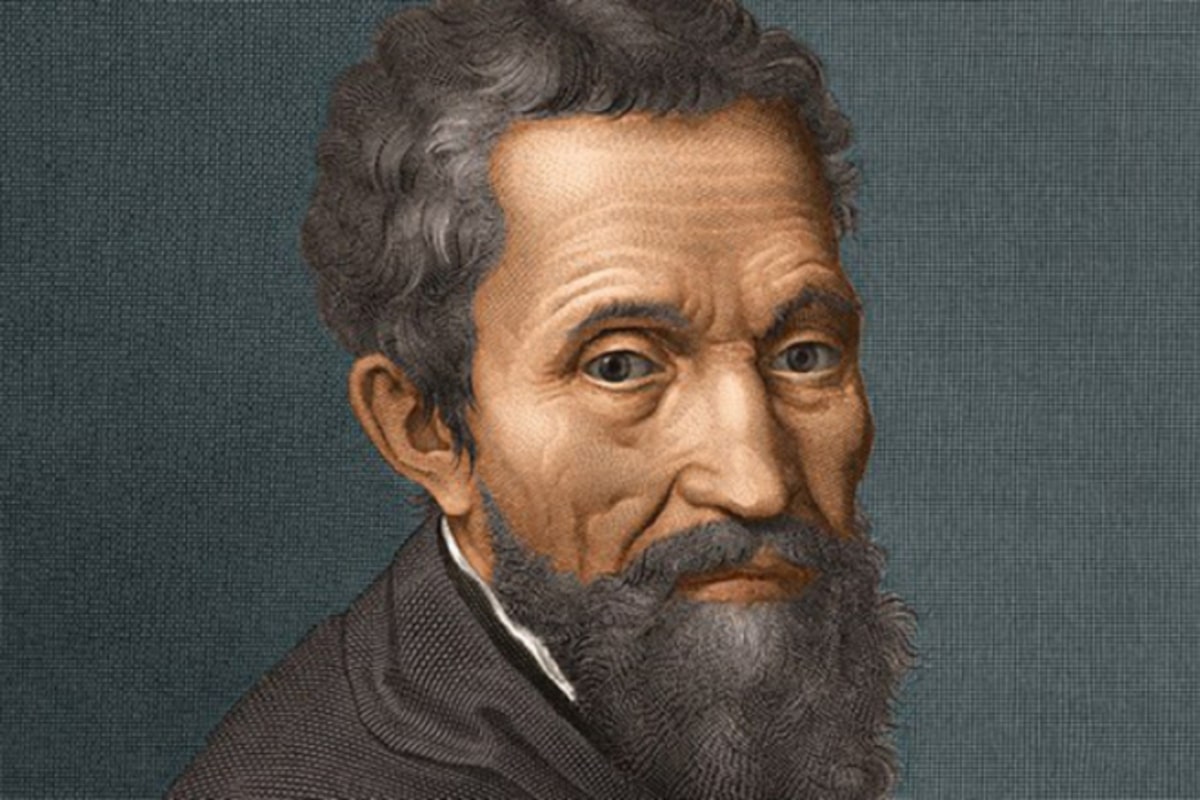Michelangelo Buonarroti is one of the greatest masters of the Renaissance whose works continue to amaze the world. His creations became symbols of genius, inspiration, and boundless dedication to art. It is astonishing how one man managed to leave such a powerful mark on sculpture, painting, and architecture. To better understand his uniqueness, we present little-known and interesting facts about Michelangelo Buonarroti that you might not have known.
- Michelangelo was born in 1475 in the town of Caprese near Arezzo in Tuscany. His family belonged to the middle class and had ancient but impoverished noble roots. Due to his frail health, the infant was entrusted to a wet nurse whose husband was a stonecutter, significantly influencing the artist’s future path.
- In his youth, Michelangelo was enrolled in an art school under the patronage of Lorenzo de’ Medici. He studied under prominent masters, including Domenico Ghirlandaio, and explored ancient sculptures in the Medici gardens. This period shaped his artistic taste and provided access to the finest examples of classical culture.
- Although Michelangelo is renowned as a brilliant sculptor and painter, he always considered himself primarily a sculptor. He stated that painting did not bring him the same joy as working with marble. Nevertheless, his frescoes on the ceiling of the Sistine Chapel became some of the most famous artworks in history.
- The creation of the Sistine Chapel ceiling took about four years. Michelangelo worked almost alone without many assistants, carrying out the titanic labor under uncomfortable conditions, lying on his back. The work was so exhausting that, according to contemporaries, he constantly suffered from neck pain and had difficulty straightening up for a long time.
- One of Michelangelo’s most impressive masterpieces is the statue of David, which he carved from a massive block of marble that had lain unused for over forty years. Other artists had considered the stone flawed, but Michelangelo saw a perfect form within it. The statue became a symbol of the Florentine Republic and human genius.
- Michelangelo had a complex character, often being reclusive and quick-tempered. He avoided social events, stayed away from conversations, and dedicated almost all his time to work. His letters reveal deep reflections on art and life, as well as a profound sense of solitude.
- It is known that Michelangelo paid little attention to his appearance. He wore the same clothes until they fell apart and often neglected personal hygiene. According to some accounts, his shoes had to be cut from his feet because he would not remove them for weeks.
- Besides sculpture and painting, Michelangelo was also a talented poet. He left behind hundreds of poems, many dedicated to themes of love, death, creativity, and spiritual quest. His poetry is distinguished by emotional depth and philosophical thought.
- One of the commissions Michelangelo accepted reluctantly was designing the dome of St. Peter’s Basilica in Rome. Despite having no formal architectural education, he created one of the greatest architectural masterpieces in the world. His solutions endowed the dome with harmony, strength, and grandeur that still impress today.
- In old age, Michelangelo continued working almost until his last days. He participated in restoration projects and created sculptures and drawings. His later works are marked by stronger emotional tension and drama, reflecting profound contemplation on death and the immortality of the soul.
- A legend says that after completing the statue of Moses, Michelangelo struck it on the knee with a hammer and shouted Why do you not speak. This anecdote highlights the extraordinary realism of his sculptures, which appeared so lifelike that they seemed capable of speech.
- Despite earning enormous fees and gaining widespread fame, Michelangelo lived very modestly and left behind a substantial fortune, which he mostly passed on to his relatives. He avoided luxury and considered art, rather than material wealth, the highest value in life.
- In his works, Michelangelo often incorporated self-portraits, embedding them into depictions of other characters. For example, in the Last Judgment fresco on the wall of the Sistine Chapel, he portrayed himself as the flayed skin of Saint Bartholomew. This reflects his deep spiritual struggles and awareness of his own mortality.
- Although he lived during a time of religious tension, Michelangelo maintained personal faith without engaging in open disputes. His later works are particularly marked by religious depth and a pursuit of inner purification, distinguishing them from his earlier, more secular creations.
- Michelangelo died in 1564 in Rome at the age of 89. He outlived many of his contemporaries and left behind a legacy that has not lost its relevance to this day. His remains, according to his wishes, were reburied in Florence in the Basilica of Santa Croce.
- His name has become a symbol of supreme mastery and relentless pursuit of perfection. For centuries, artists, sculptors, and architects have drawn inspiration from Michelangelo’s works, considering him an unsurpassed model. His influence is visible not only in Italy but across the entire European cultural landscape.
- Despite his genius, Michelangelo remained extremely self-critical. He frequently reworked his projects and sometimes abandoned completed works if he deemed them imperfect. This pursuit of ideal beauty ensured that his creations maintain astonishing strength and expressiveness.
- There is evidence that Michelangelo regarded inspiration as a divine gift. He believed that a true artist should uncover the form hidden within the stone rather than invent it. This philosophy profoundly shaped his approach to creativity and remains an enduring example of the harmony between human endeavor and nature.
We hope that these incredible facts about the life and work of Michelangelo Buonarroti have helped you gain a deeper understanding of this remarkable figure. His genius continues to inspire thousands of people around the world today. Learning such fascinating and captivating facts reminds us how limitless human potential can be in the pursuit of beauty and excellence.





